Selected Works 2020-2023
Part 1 Architectural Assistant Portfolio







Selected Works 2020-2023






Location: Preston, Lancashire, UK
Date: Sep, 2022 - May, 2023
Tutor: Dr Johnathan Djabarouti, Michael Daniels
Manchester School of Architecture Third Year Academic Work
[UP]Cycling Fashion Centre aims to establish an inclusive fashion community in Preston that addresses the throwaway culture of fast fashion. Home to Preston’s local fashion designers and students, it weaves the community together to explore methods of repurposing used clothes and to educate the public on the ethical sourcing of garments for daily wear.
The programme comprises used clothes collection points, sorting and manufacturing facilities, workshops, studios, classrooms, galleries, café, shops, and libraries. These programmes are split into four main design fragments that are linked to each other. A one-way route is designed specifically for visitors to have an immersive and hands-on learning experience of the upcycling process that begins at the art gallery and ends in the building’s own clothes shop. Its strategic location nestled between Preston Town Hall and Preston Bus Station provides an extension to the town that is celebrated through a seamless public green space that cuts across the site.
My proposal focuses on creating a design scheme that has low-embodied carbon. This would be achieved by retrofitting the existing buildings and reusing existing materials in the new buildings to reduce the carbon emissions from the construction process. My design scheme emphasizes the use of the glulam structure, which offsets more carbon than it outsets. The motif of textile patterns has been a recurring theme throughout my design. These could be seen from the perforated exterior brick walls that mimic the overlaying and intersecting threads in knitting. Sculptured internal plaster wall panels in the art gallery space which portray folds of fabric induce the desire for touch from visitors. Atrium space with a top light and clerestory window will be applied to welcome more daylight into the space and increase the solar gain to reduce reliance on the mechanical system.

The close proximity among the Guild Hall, Harris Public Library, Museum and Art Gallery, and my site lead me thinking of a possibility to form a dialogue between the past and present programmes of these places As I was reminiscing the relation of the once glorious trading industry in Preston Guild, the booming textile mill on my site, and the rich art history featured in the gallery, it induces me the idea of designing something that has to do with the current fashion scene.
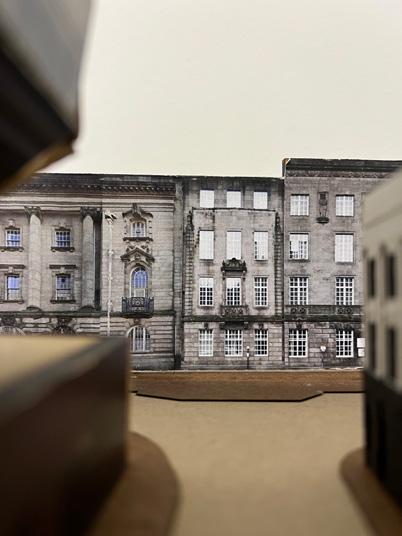
ROUTE 1
JOURNEY FROM CROOKED LANE TO PRESTON BUS STATION




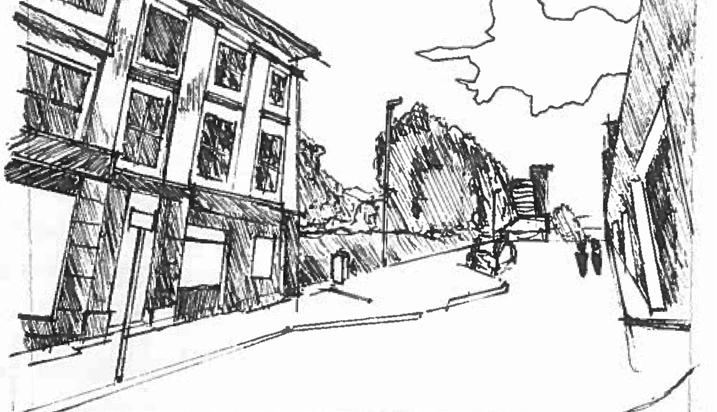


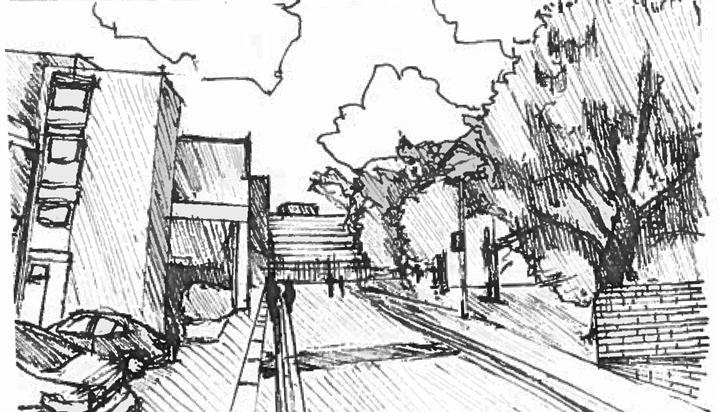
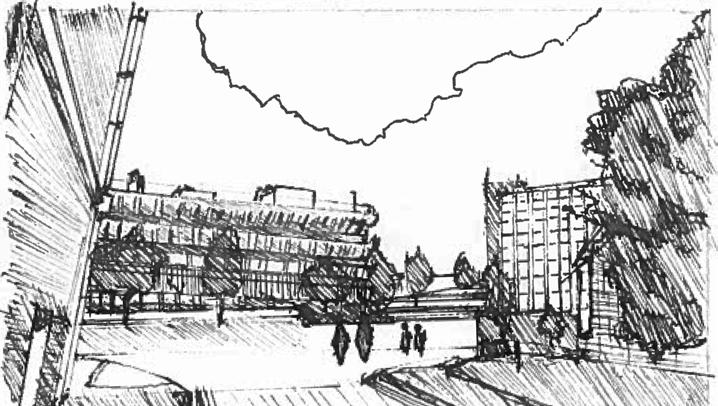
ROUTE 2

JOURNEY FROM LANCASTER ROAD TO THE MIDDLE OF THE SITE
ROUTE 3
JOURNEY FROM PRESTON BUS STATION TO THE MIDDLE OF THE SITE
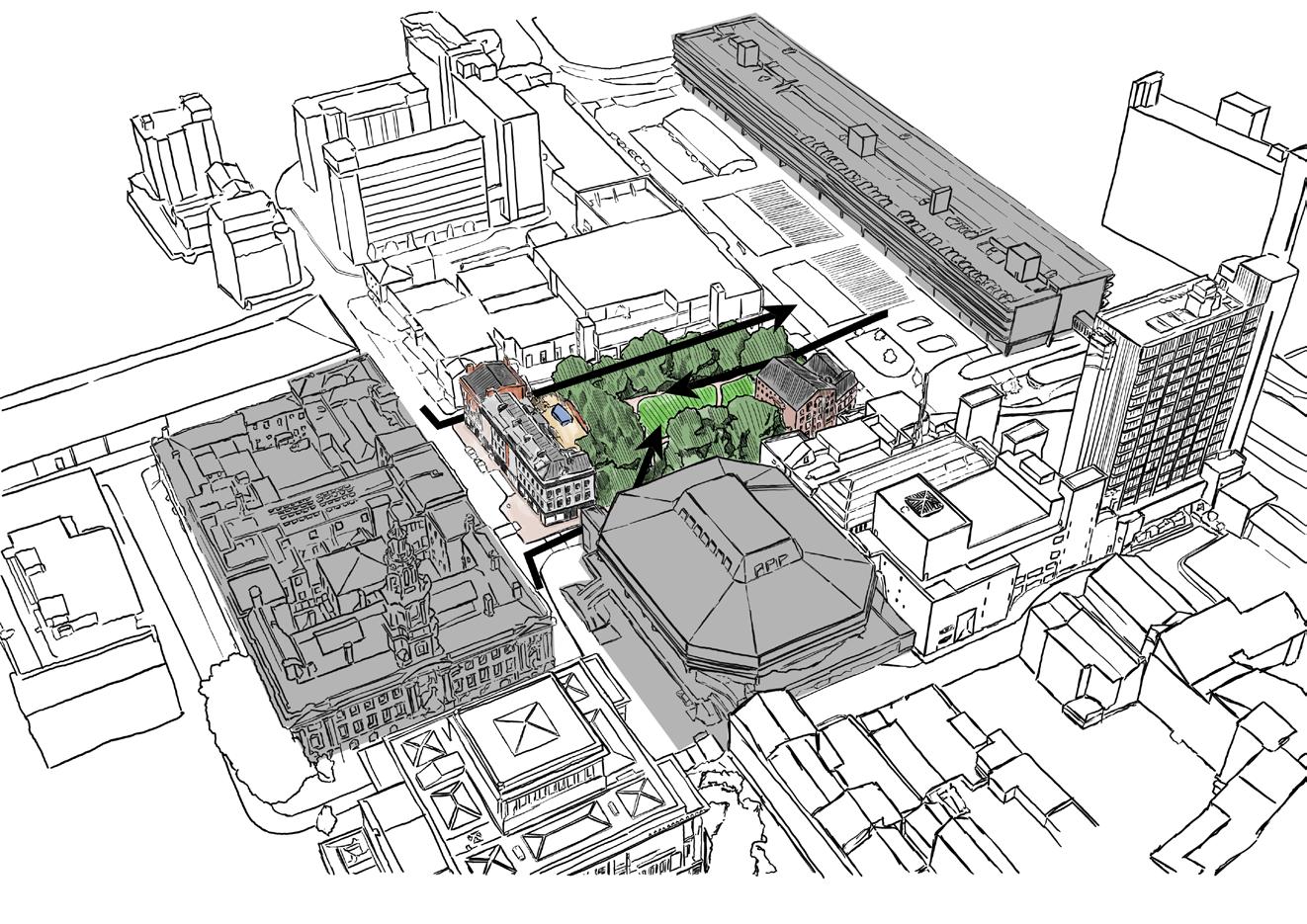
Throughout the 18th century, cotton became the prime export of Preston and by the end of the Victorian era, the number of mills in Preston was at its climax. In this diagram, the map details the location of mills in Preston in the 1890s.

I argue not only that these Mills or; these Urban Artefacts (Rossi, 1966), should be considered as such simply based on their historic quantity, but rather, that they collectively form a reflection of Preston’s essence and that this is due to the social and cultural influence that the Industrial Capitalist held over urban development


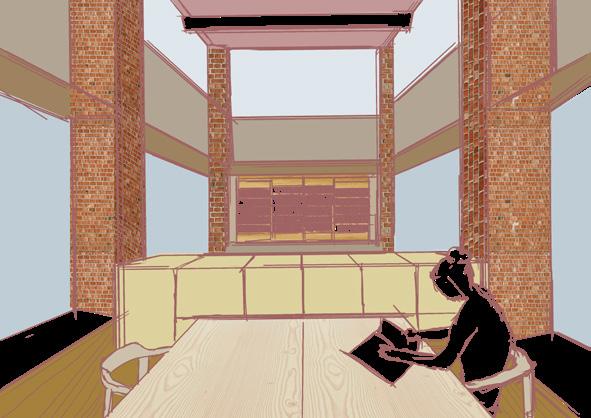
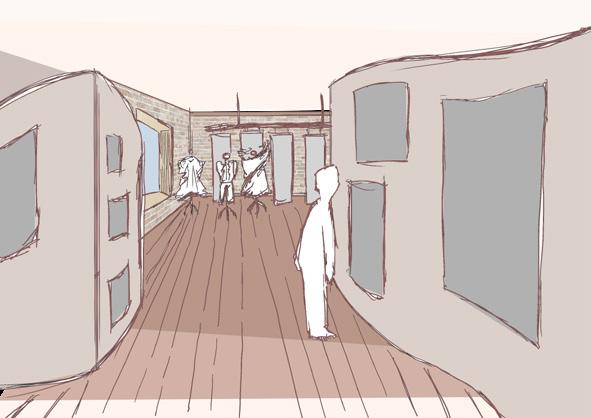

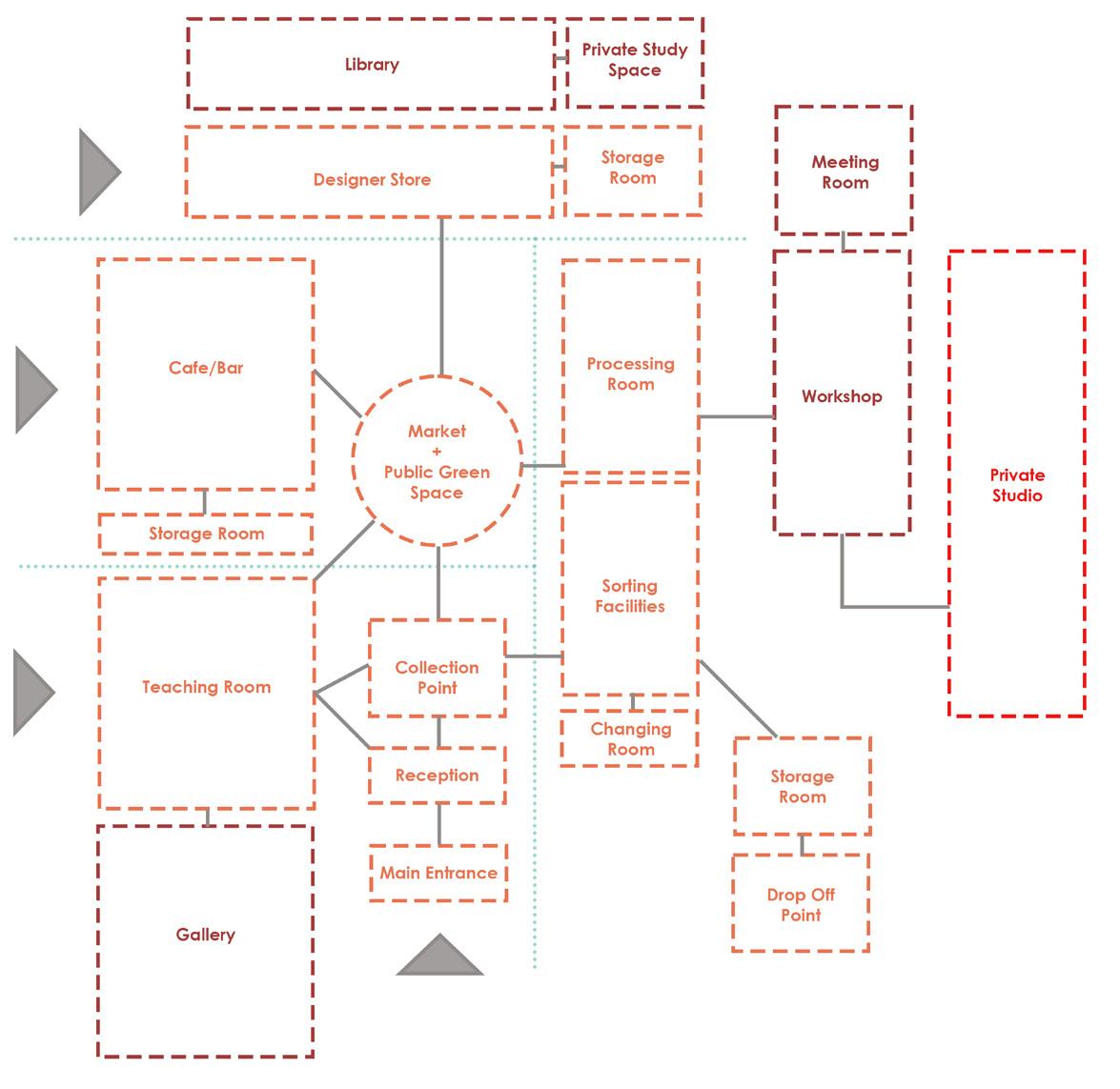



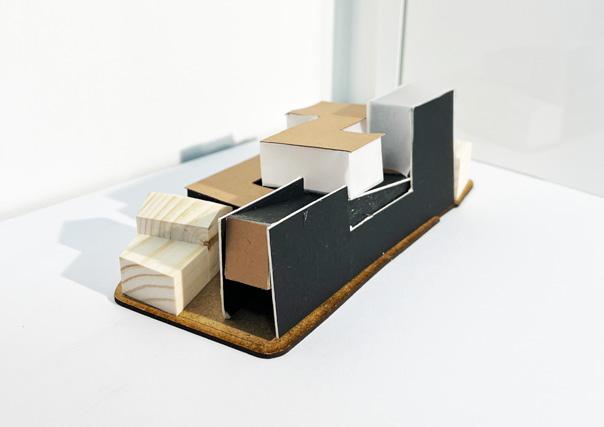
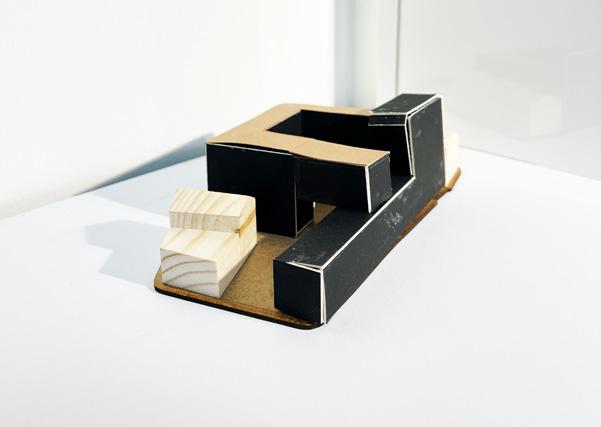

Arguably, one of the most pressing issues in today’s world is the wastage caused by fast fashion With 80 billion fashion apparels manufactured every year, the so-called ‘fast fashion’ allows consumers to buy more, but they are wearing these garments less often and disposing of them at an unprecedented rate. In Britain, more than 300,000 tonnes of clothes end up in landfill every year. My design aims to address on this throwaway fashion culture, while ensuring the programmes created benefit the community of Preston.
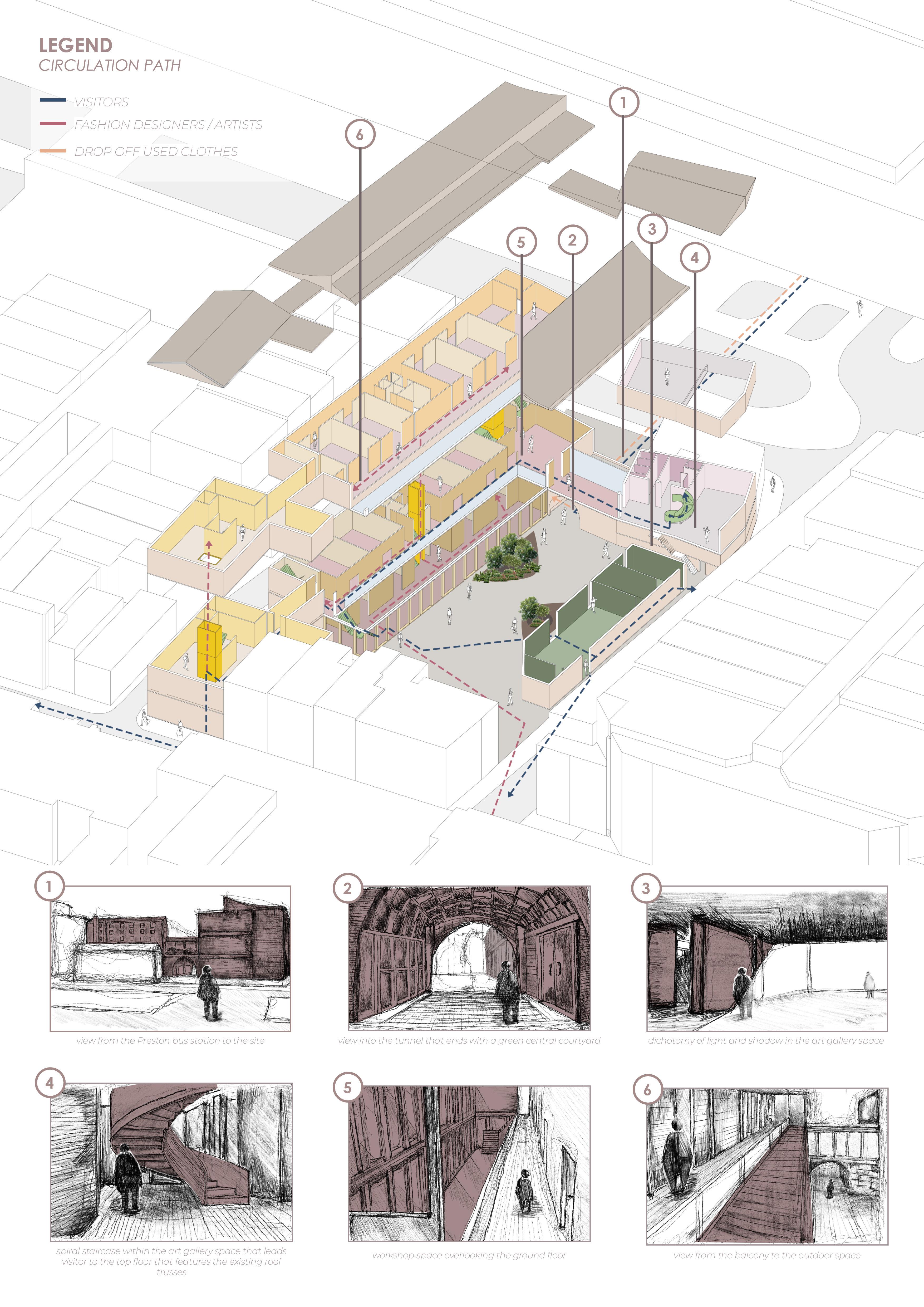

Fire escape strategies on plan

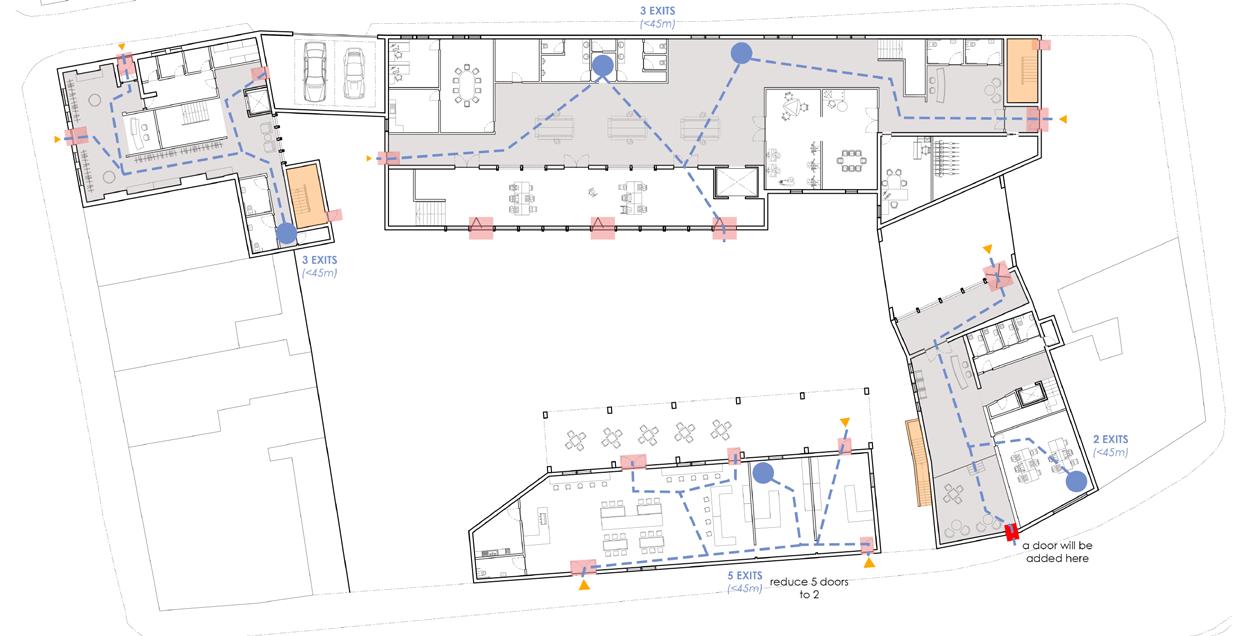

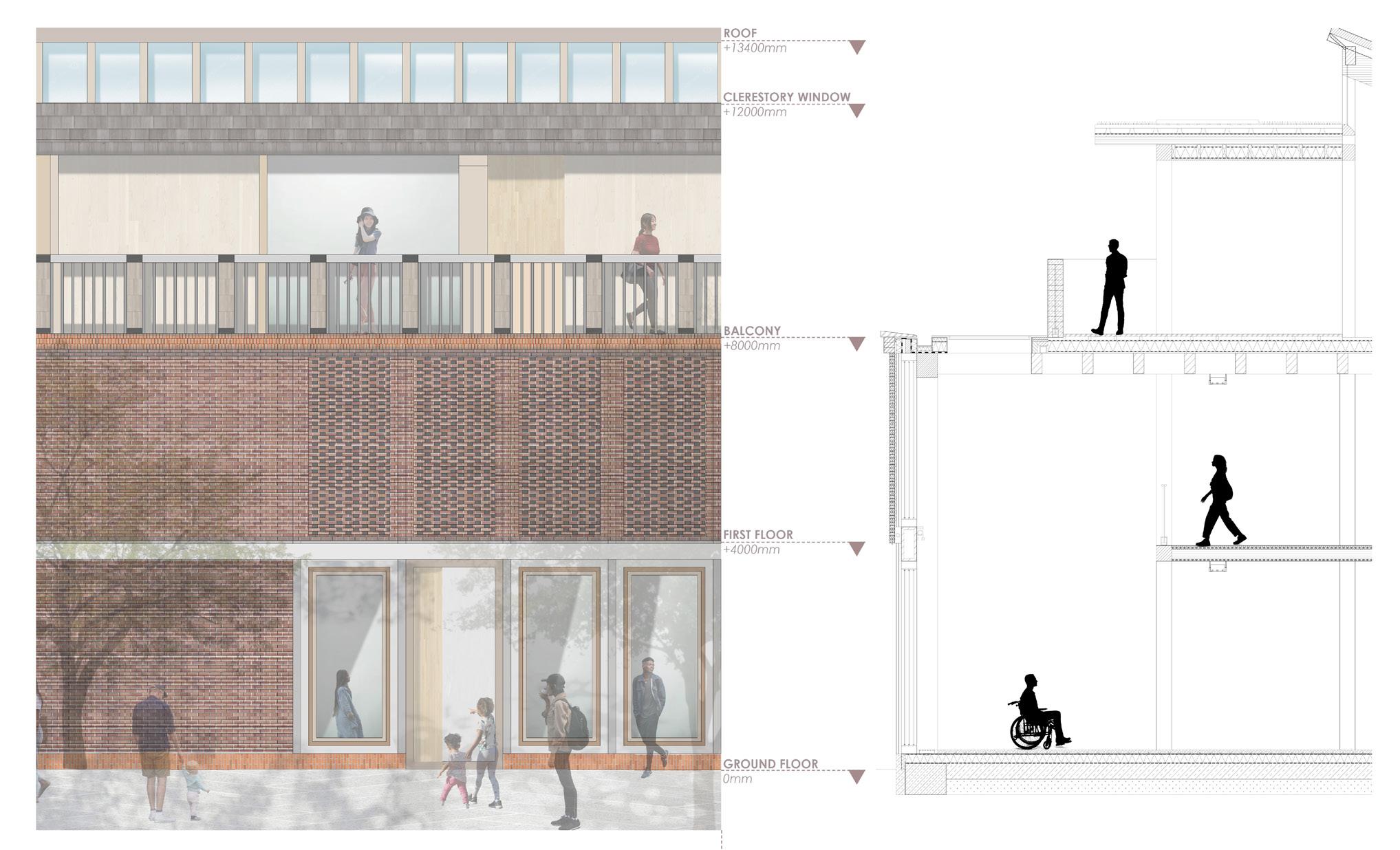
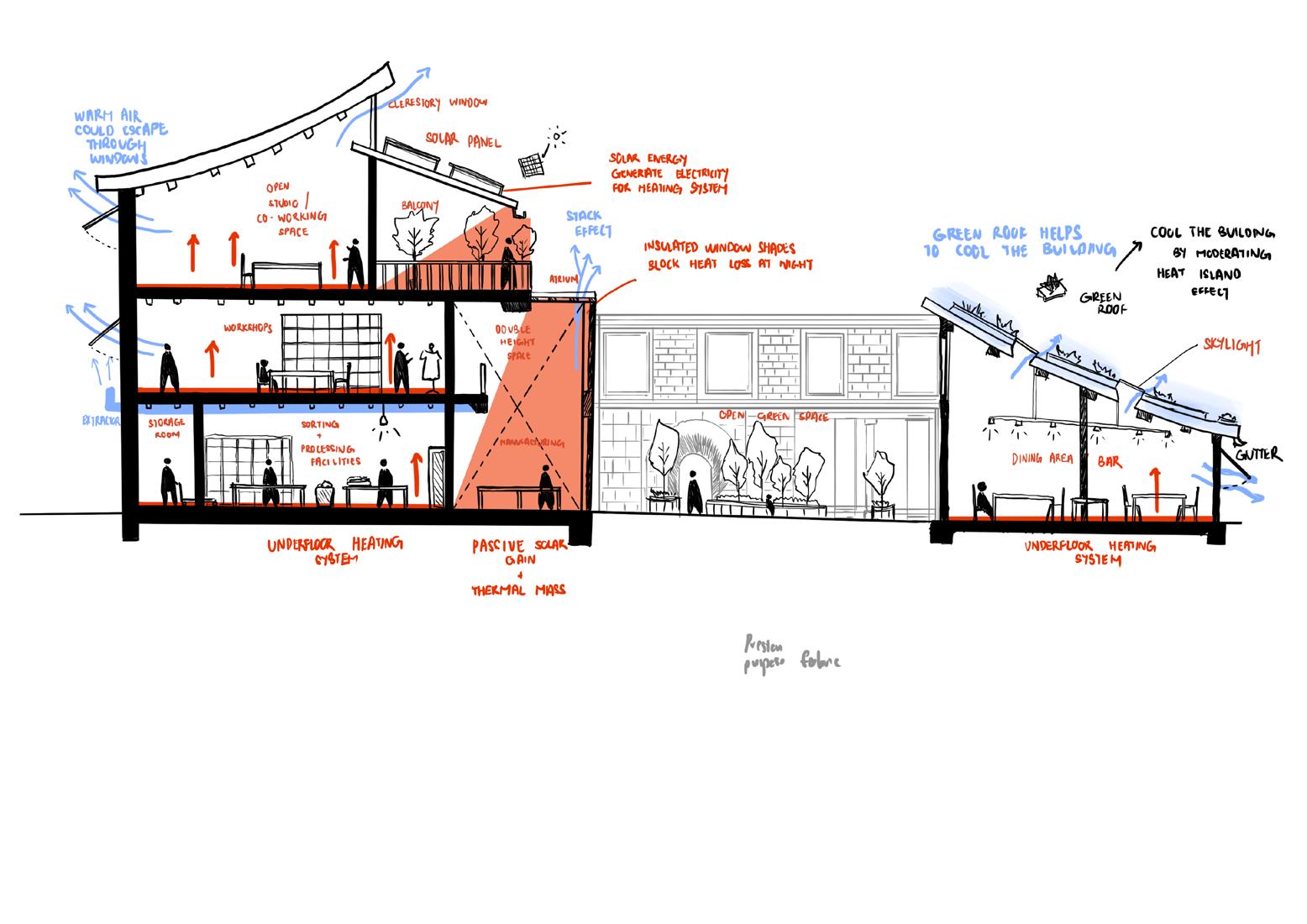
Environmental strategies on plan
Heating, cooling, daylighting and ventilation strategies




1:50 scale model of the facade
This 1:50 corner model features the corner part of the manufacturing building which includes the staircase and the balcony at the top. The curtain wall unit offers visitors and passerby an insight into the action of the manufacturing space Meanwhile, the perforated brick cladding on the top harmonises well with the glulam timber frame structure Visitor’s experience in the space is further enhanced with a light well in the entrance area with lights coming into the corridor of the first floor.


Brick tiles that are laid in between the manufacturing building and the restaurant building indicate a small open plaza that allows people to gather together and hold events such as a fashion show or a vintage clothes sale. This empty space holds potential to form an extension to the original programme of the design with the perforated brick wall facade acting as a backdrop.
An arched walkway forms a barrier between the open green space and the rear part of the existing shop lots along Lancaster Rd. Such an intervention echoes the design of the listed Miller Arcade nearby. Its brick build-up creates a continuation from the old to the new.
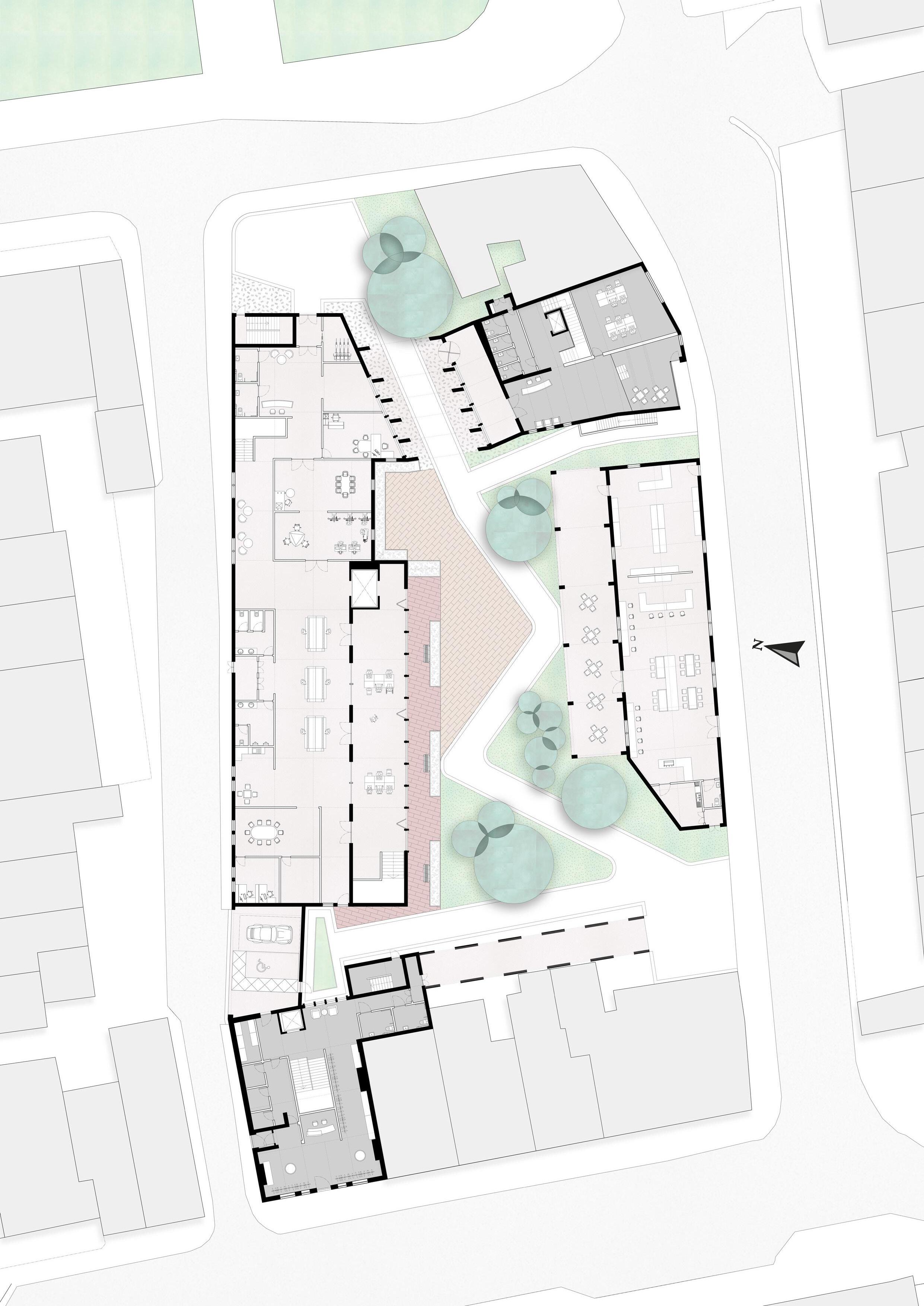
Interior wall design
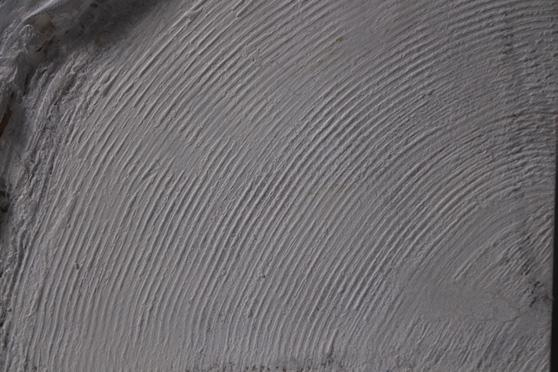
As a continuation from my previous decision to use plaster as the interior wall material of the art gallery, I have made this 1:5 scale wall panel that is normally the size of 2000 x 1200mm. The design of this wall panel reinforces the notion of upcycling fabric with a sculptural form of fabric featured in the middle part of the panel. It is cornered with two circles with circular rims engraved on it which encourages visitors and users to touch these wall panels. Such a minute yet interesting detail could be an unexpected element for visitors to discover during their visit in the space.

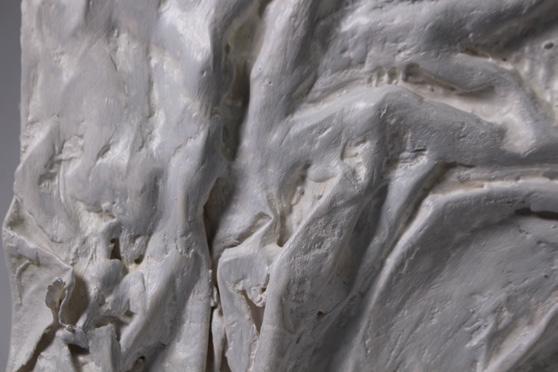
PLAN
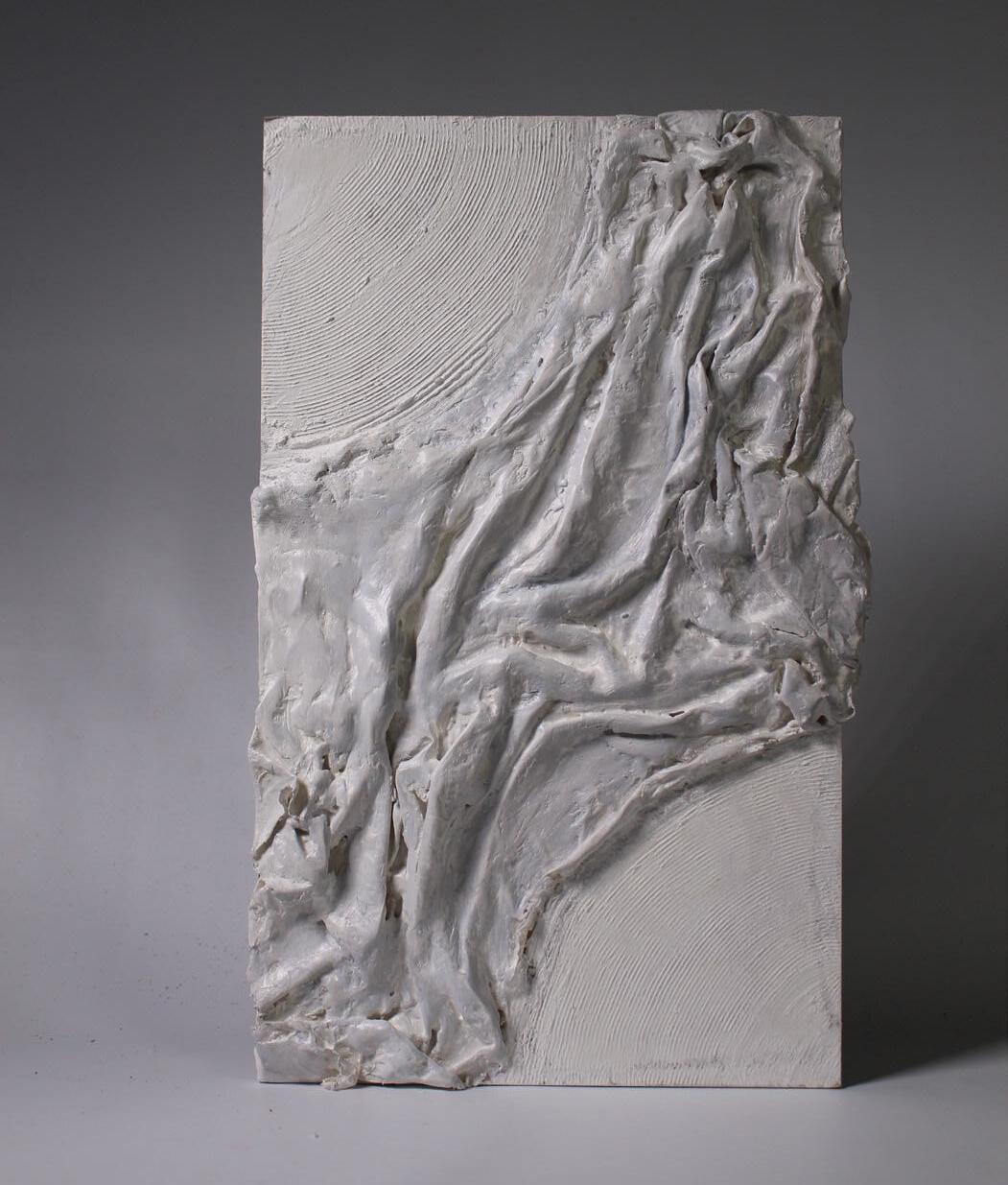
SECTION A-A (1:100)
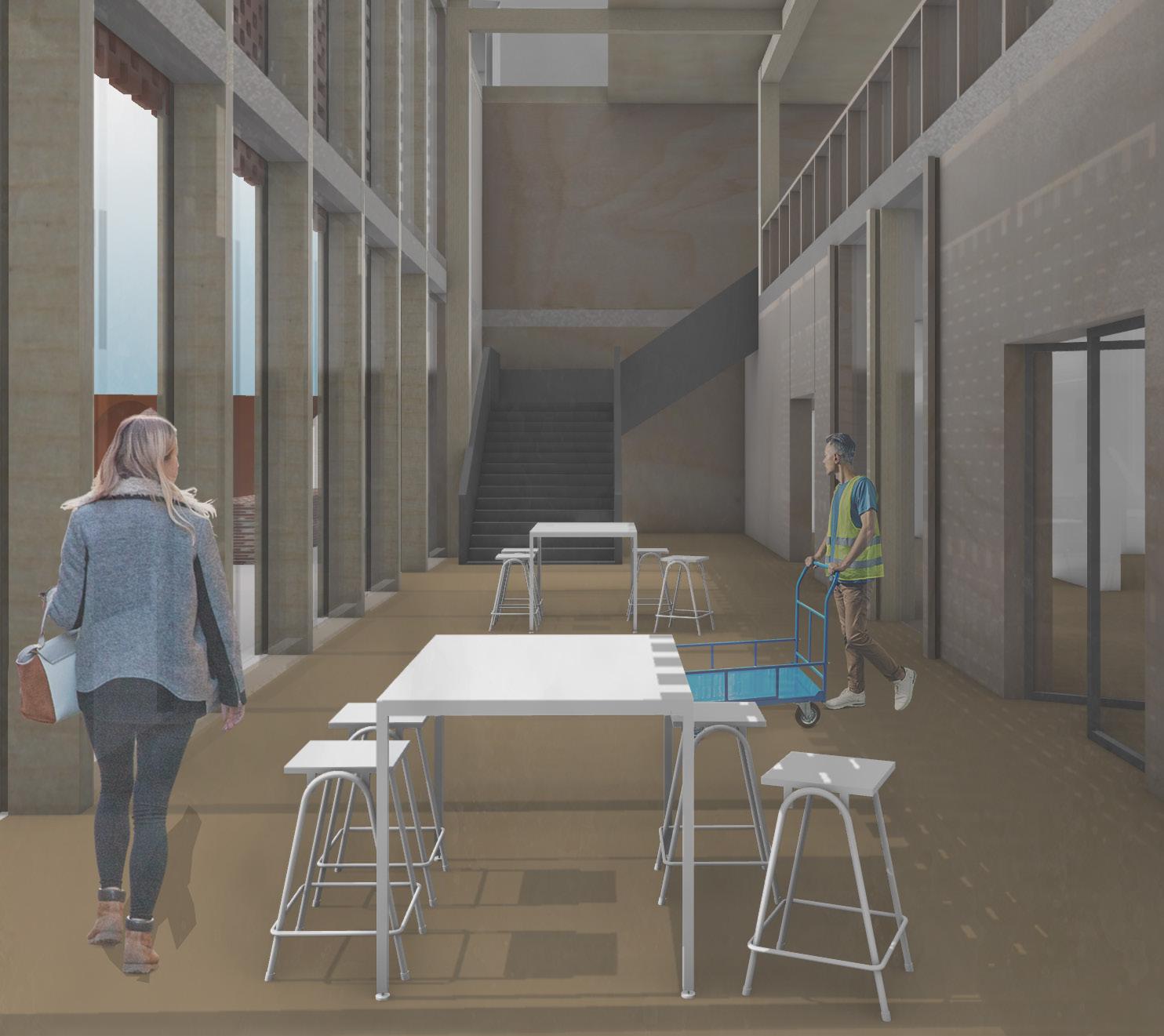




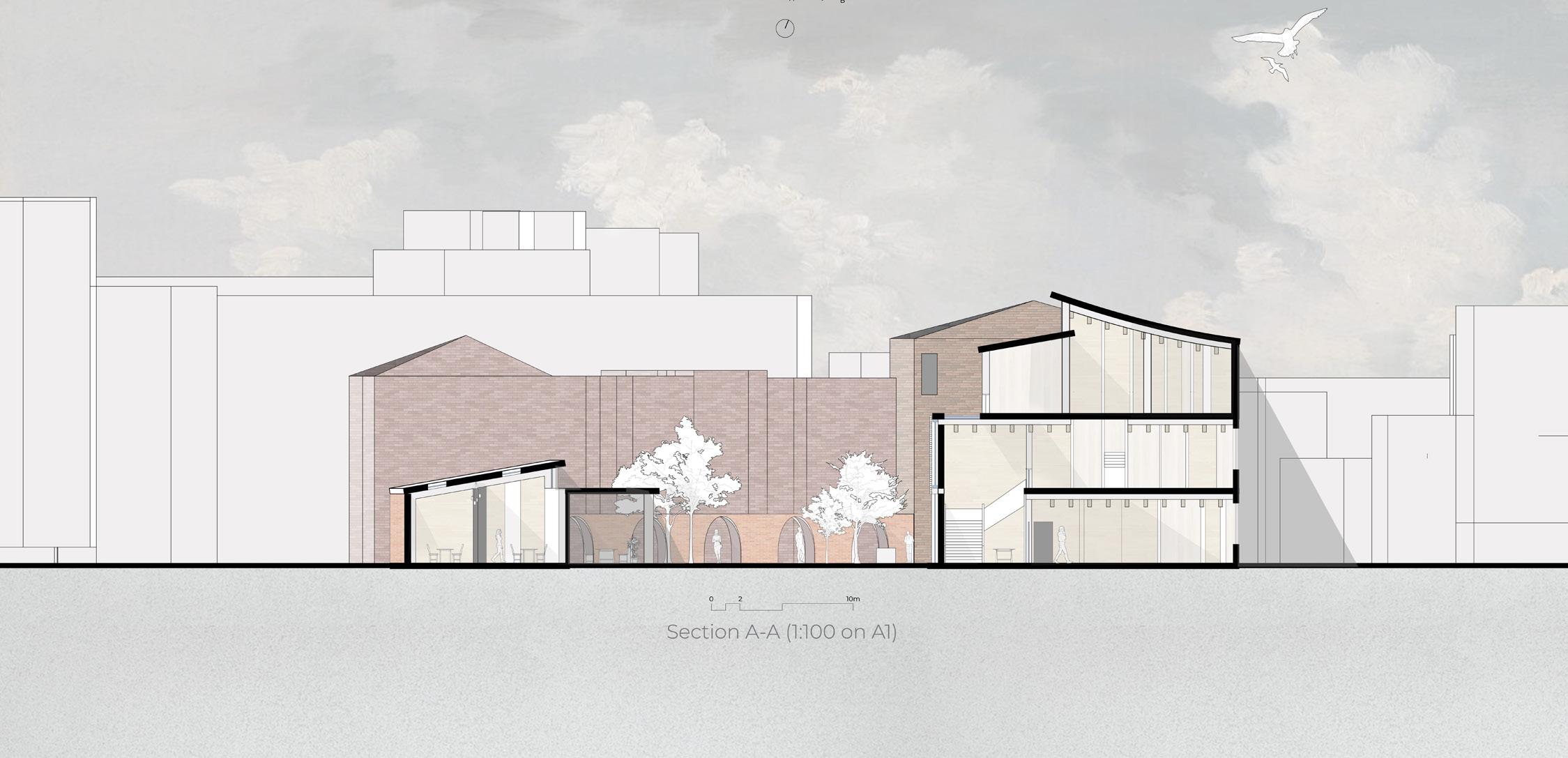 SECTION B-B (1:100)
ELEVATION C-C (1:100)
SECTIONAL PERSPECTIVE VIEW
EXTERIOR VIEW FROM OPEN GREEN SPACE
SECTION B-B (1:100)
ELEVATION C-C (1:100)
SECTIONAL PERSPECTIVE VIEW
EXTERIOR VIEW FROM OPEN GREEN SPACE
Location: Manchester, UK
Date: Jan, 2022 - May, 2022
Individual Work
Tutor: Dominic Sagar
Manchester School of Architecture Second Year

Academic Work
Understanding the rich history of Ancoats in Manchester has given me revelations that the once glorious and most celebrated presence of Manchester’s history had once been on the verge of disappearing. Ranging from the 1960s’ compulsory purchase and clearance orders of the existing houses for many Ancoats streets, to the closure of the Daily Express Building in 1989, it must be uncertain to many on what the future held for the local commmunity in Ancoats. Nonetheless, it is with exciting hope and sheer resilience that this neighbourhood has once again found its momentum to rebuild and rebrand themselves into what it is today.
My housing scheme for the theatre performers will be a step forward for the Ancoats’ community to continue exploring the endless potential of this diverse and interesting neighbourhood. More importantly, the scheme will incorporate public space like amphitheatre and external recreation area to produce an opportunity for the locals to celebrate their vibrant homegrown performing arts and creative industry. Through this project, I had creatively explored the materiality and structural elements of the existing buildings in Ancoats to create a space that linked to its industrial past, while echoing long-established Mancunian performative art venues.
The keyword for my design is ‘hope’, and it is a coincidence that the name of the theatre adjacent to my site begins with the same word. I view the creative industry of Ancoats as a glimmer of hope for the local community to continue venturing their brand new identity because this area will always remain as a history with a future.
Residents of Ancoats were staying in a shabby and dilapidated living condition due to the heavy air pollution caused by the heavy industry during the industrial revolution
Bad working environment and tight living space in back to back houses were prominent social issues back in the days.

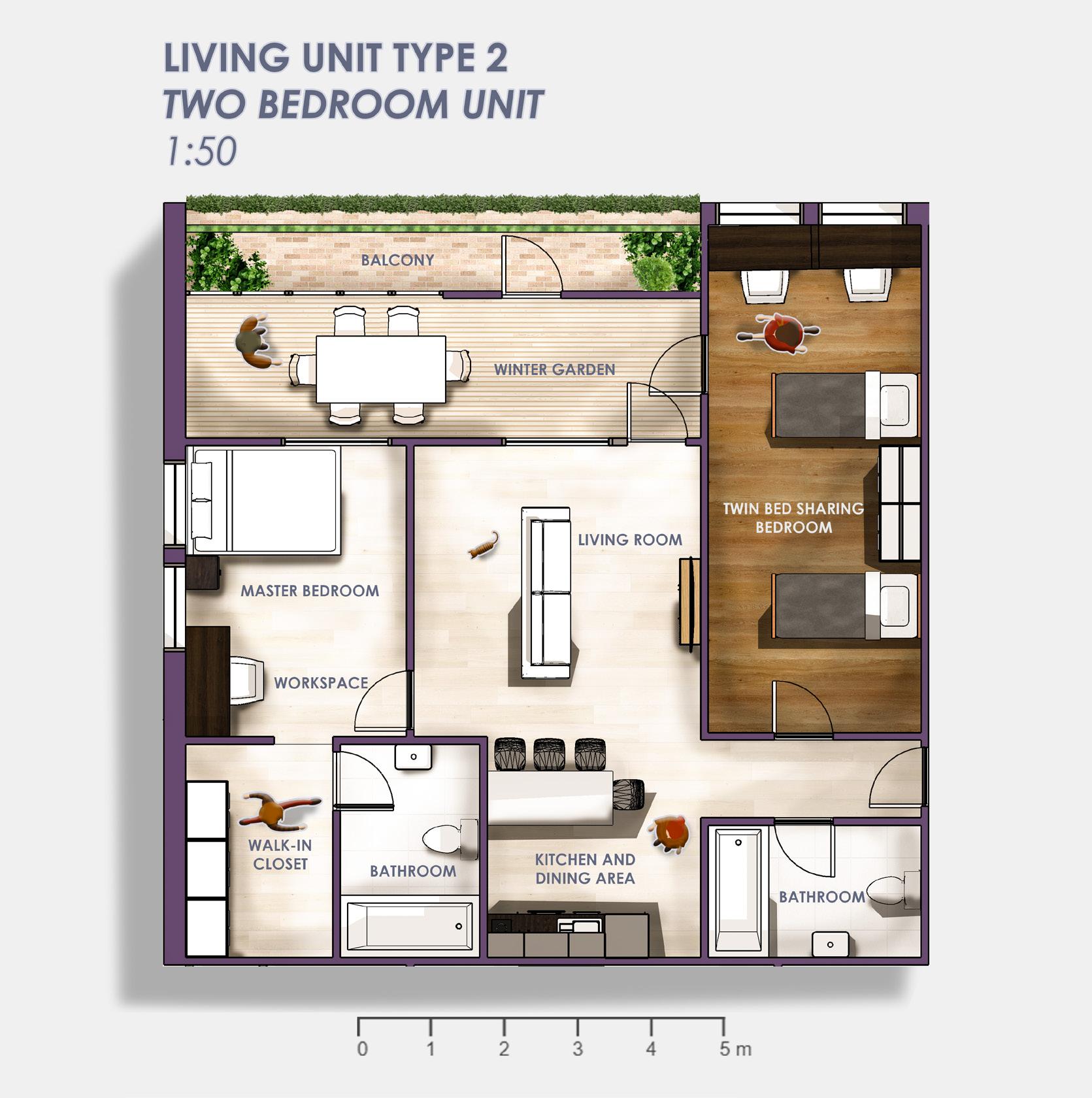
The final cotton mill in Ancoats lasted until the mid-20th century and the closure followed by a series of demolition work spearheaded by the local city council.
After years of decline and dereliction in Ancoats, the local authorities and organization have worked together to lead a regeneration scheme in the area, which has consequently piqued the interest of many homegrown artists and creators
Living condition in Ancoats will improve tremendously by connecting the neighbourhood with nature through open public space, such as community kitchen, amphitheatre and edible garden
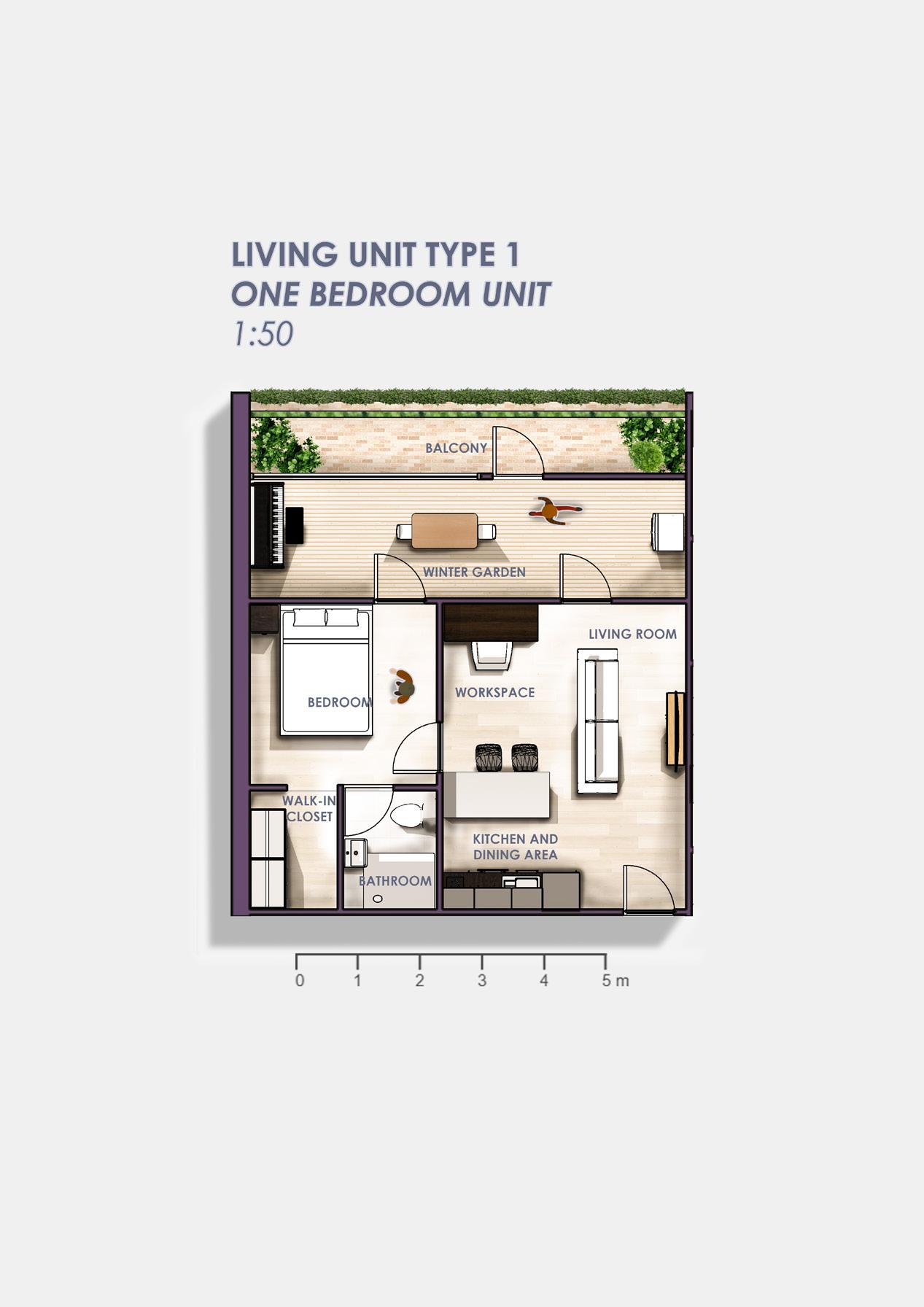
Better workspace and practice area will be crucial to ensure artists have good working environment provide adequate accommodation for their needs







The main highlight of this scheme will promote and celebrate the thriving community of performing artists, while giving reminiscence to occupants of glorious history of Ancoats through careful consideration of the usage of materiality and structure
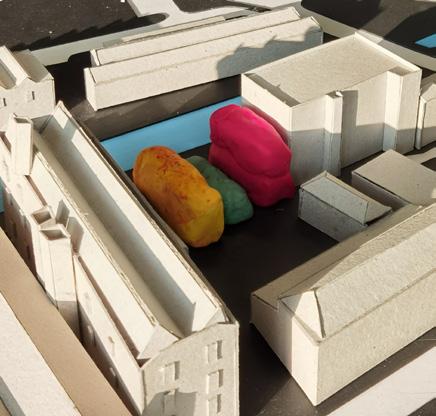
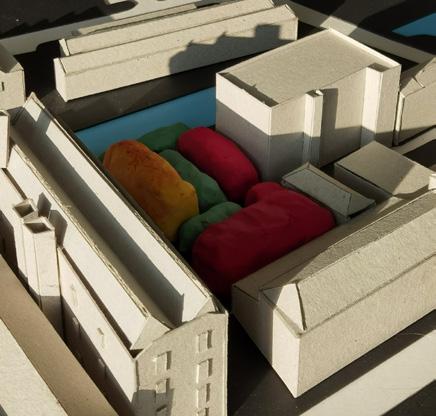

Key design parameters of case study
Date: Jan, 2023 - May, 2023
Individual Work
The case study project was to analyse the construction, environment, structure, and materiality of Cristalleries Planell by Harquitectes. The architect cleverly imposed a new structure while retaining two of the three facade sides on the site area that used to be a glass factory. The implementation of passive methods of ventilation through atrium and chimneys, and lighting strategies through ETFE membrane have helped to maintain favourable internal conditions. The building analysis required a strong understanding on mechanical and passive systems in the building to gauge their placement and functionality.

I have created a rhino model as a base on top of which hand drawings and annotations were created.
Floor Slab to External Wall Detail
1:20 Technical Drawings and Envelope Study
Structural design strategies in isometric exploded view

Thermal control diagrams of interior environment
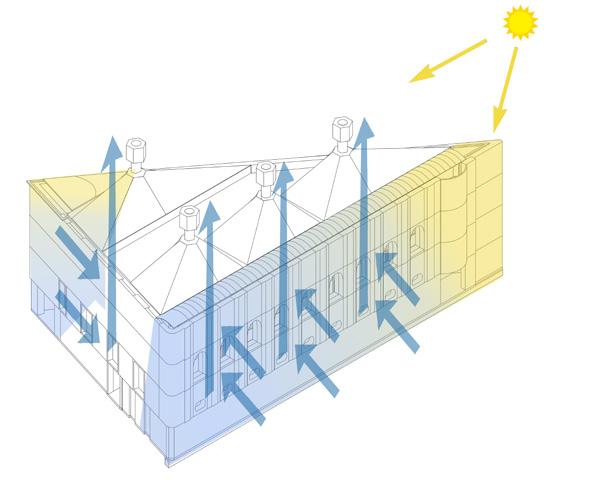

Existing Wall and Window Opening Detail
Heating and cooling system in sectional view
Environmental design strategies in isometric view

Inner Wall to Ground Slab Detail
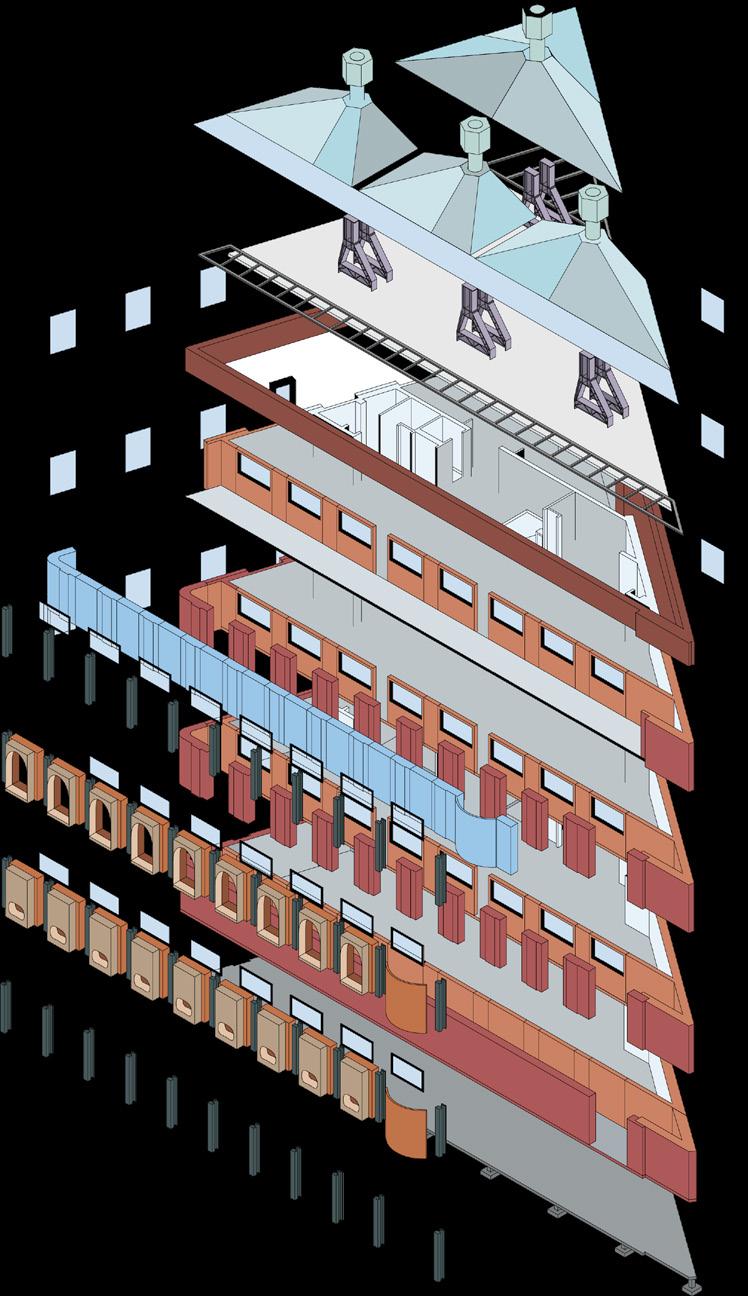
Location: Ellesmere, Shropshire, UK
Date: May, 2022
Throughout this two-week project, my project team and I have partnered with Ellesmere Yard in Shropshire, Sue Ball from MAAP, and Canal & River Trust to re-think, re-design, and re-vitalize a historic canal workshop with the aim of broadening social productivity and community involvement.
I was tasked specifically to generate ideas for the docking area of the canal building and to create proposals of workshops on the upper storey of the main building. This project has allowed me to:
- explore and develop principles in adaptive reuse, landscape design, and slow architecture;
- produce design proposals for a series of unique spaces within the site;


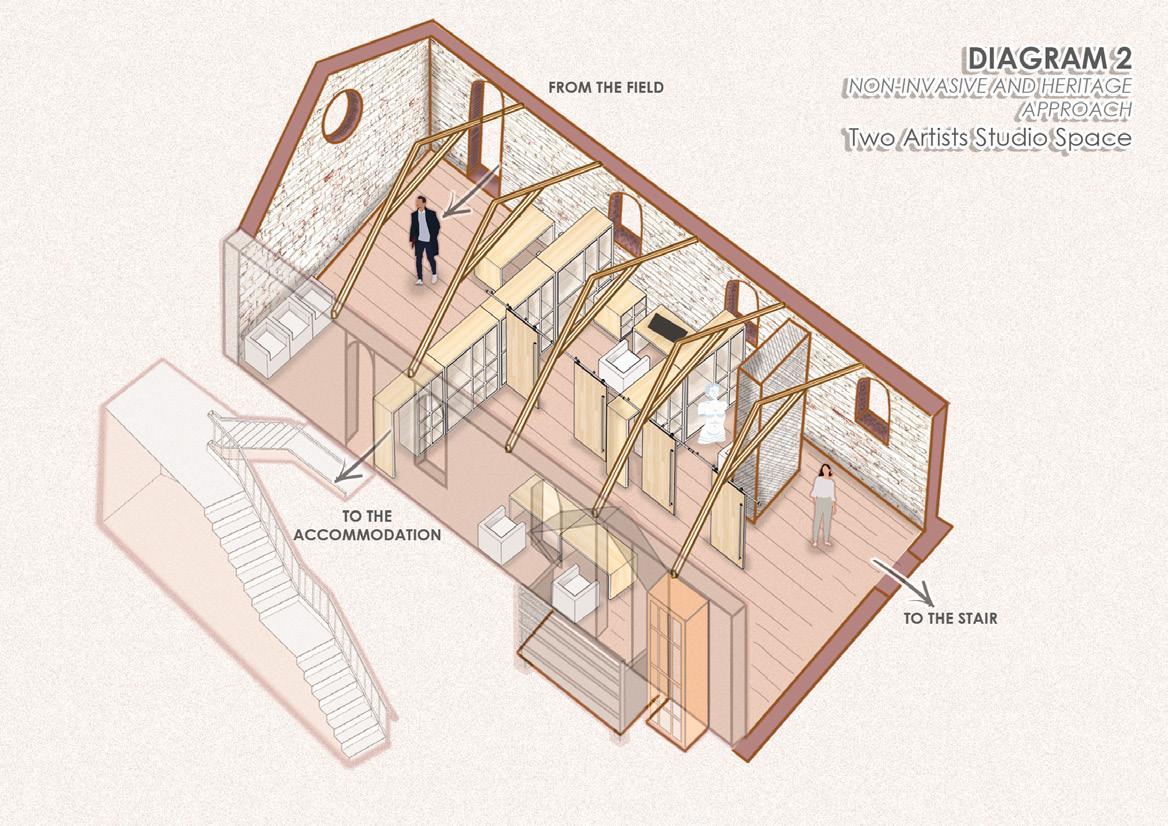




- create illustrative visuals, graphics, sketches, and drawings;
- provide an opportunity to express creative and artistic ideas along with analytical research in an exciting and locally valued site.
The drawings and diagrams shown here are the individual works that I contributed to the project team.
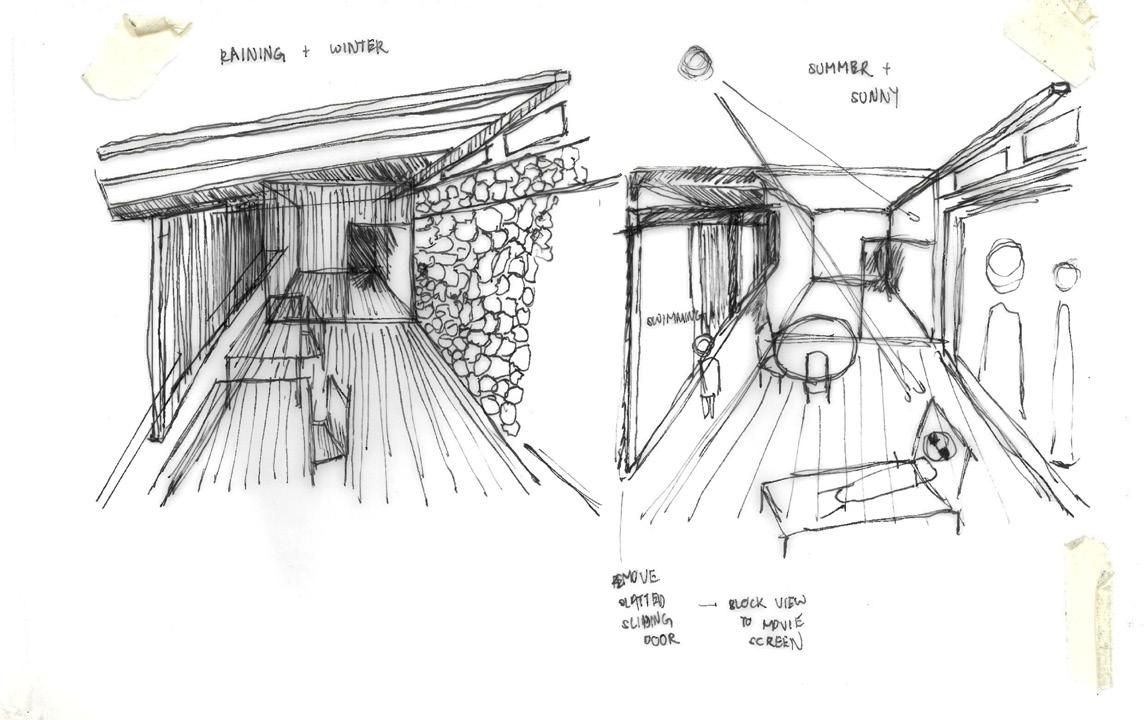
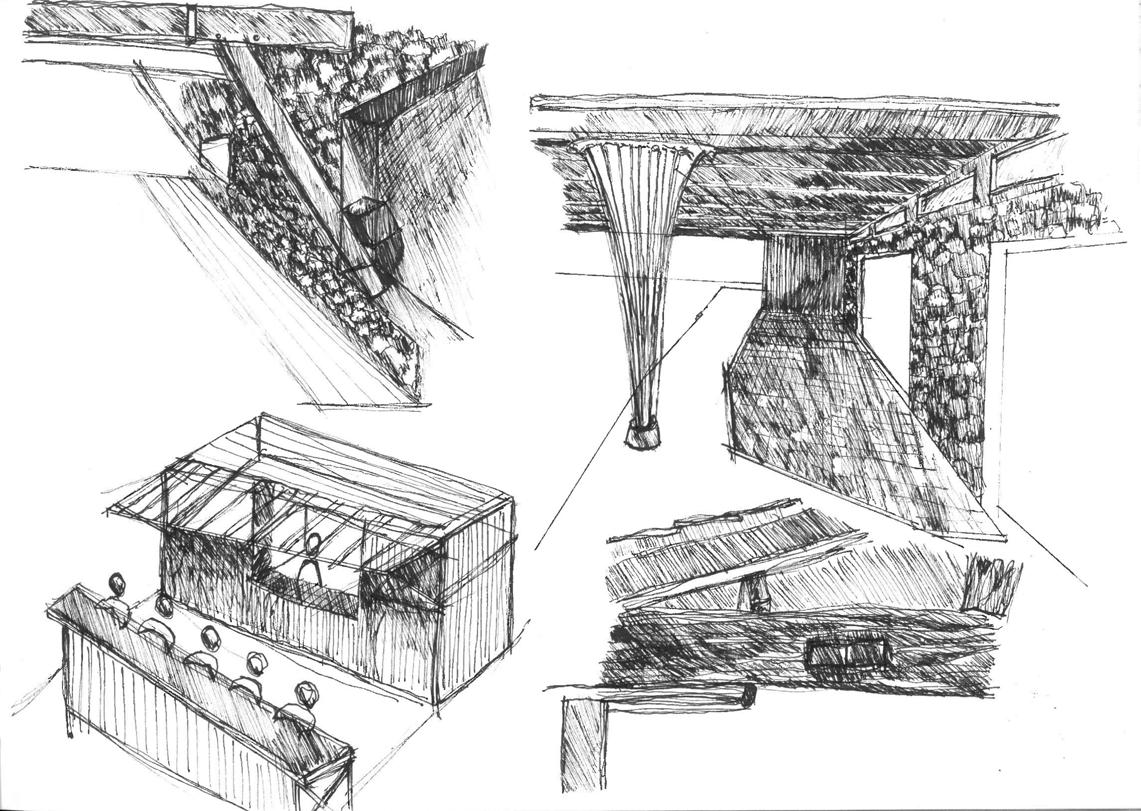
Concept sketches and brainstorming

Architecture Assistant Part 1
LinkedIn www.linkedin.com/in/roninlim
Uni Website msa.ac.uk/2023/profile/roninlim/
I am a graduate of Bachelor of Art (Hons) Architecture in Manchester School of Architecture. I would like to apply the knowledge I have learned at university and gain related work experience to enhance my understanding of the industry further. I am inspired to be a humble architect who is willing to learn new ideas constantly to be able to design spaces that will become symbols of inclusivity and identity, in order to bring light to the lives of many people around the world.
MAY-JUN 2022

PROJECT MEMBER OF ENRICHING ELLESMERE (MSA Live 2022 x Ellesmere Canal Yard)
Throughout this two-week project, my project team and have partnered with Ellesmere Yard in Shropshire, Sue Ball from MAAP, and Canal & River Trust to re-think, re-design, and re-vitalize a historic canal workshop with the aim of broadening social productivity and community involvement. I was particularly in charge of producing design proposals for the workshop spaces within the site through illustrative visuals, graphics, sketches, and drawings.
DEC 2021-MAY 2022
RIBA STUDENT MENTORING SCHEME at Chapman Taylor, Manchester, UK
The RIBA Student Mentoring Program has helped me massively, especially in understanding the future prospects of an architectural career and the pathways would take after graduating with my undergraduate degree. Through this opportunity, I have visited an architectural firm for the first time in person, and have a glimpse of what and how exactly an architect works.
DEC 2021-JUN 2023
INTERNATIONAL STUDENT AMBASSADOR at Manchester Metropolitan University, Manchester, UK
This role allows me represent my university to forge a friendly conversation with prospective international students who are interested in continuing their tertiary education in Manchester. was responsible to communicate with overseas students who have queries towards university’s life and assisted the university in answering applicants’ concerns.

MAY-JUN 2021
PROJECT MEMBER OF BIT BY BIT (MSA Live 2021 x Lifeshare) at Manchester, UK
This two-week project strives to overcome the inequality in the issue of digital inclusion through our collaboration with Lifeshare. This project has allowed me to design and gamify a learning app teaching essential digital skills to the homeless in such a way that the content can be easily digestible and enjoyable for use by all ages.
[1 & 2] MDF laser cut model of New Victoria Theatre, Preston | Group work | 2023
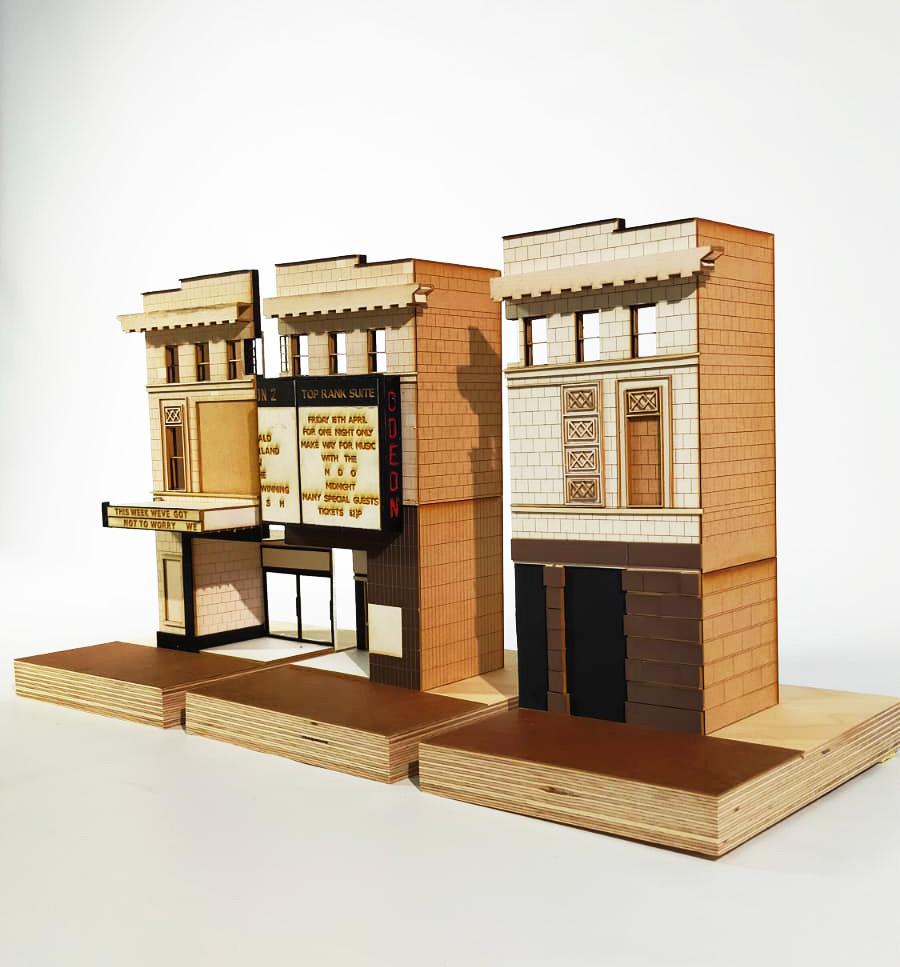
[3] Paper model of the facade of New Victoria Theatre, Preston | Group work | 2023
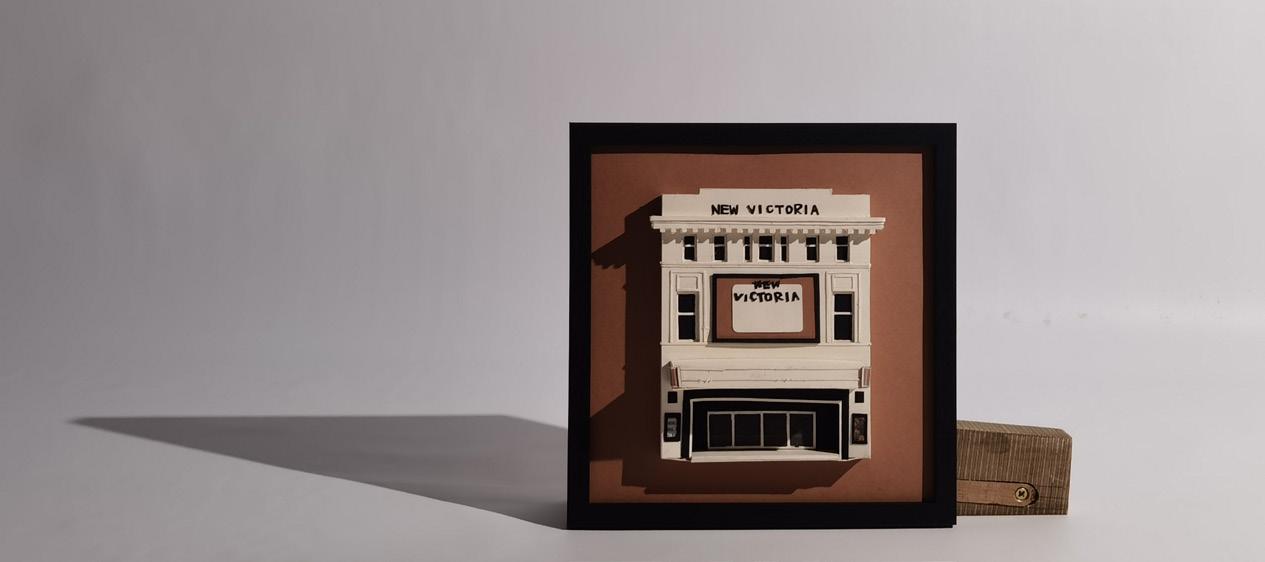
[4] Hand sketch work during lockdown | Individual work | 2020

[5 & 6] Graphic illustration work adopted for society’s hoodie design | Individual work |2020

[7] Site model made up of cake | Group work | 2021

2020-2021
REGIONAL DIRECTOR OF SALES AND MARKETING at AIESEC in Manchester, University of Manchester, UK
2019-2020
MARKETING OFFICER at iCUBE, University of Manchester, Manchester, UK
My experience working as a marketing officer in a UK student-led initiative allowed me to learn indepth skills in graphic design and acquired a better understanding of writing skills, which felt that was lacking on.
2019-2020
VICE CHAIRMAN/CO-FOUNDER OF CRAFT, HANDIWORK AND ART MEMBERS’ SOCIETY (CHARMS) at INTEC Education College, Shah Alam, Malaysia
Together with a good friend of mine, we founded this society with the aim to bring together students who are interested in craft, art and design. We held workshops fortnightly and gathered more than 20 students at the end of our term.
2019-2023
BA (HONS) ARCHITECTURE at Manchester School of Architecture, Manchester, UK
2017-2019
CAMBRIDGE INTERNATIONAL A-LEVEL at INTEC Education College, Shah Alam, Malaysia
2012-2016
SIJIL PEPERIKSAAN MALAYSIA (SPM) equivalent to GCSE at Maktab Sultan Abu Bakar (English College) , Johor Bahru, Malaysia
AWARDS AND ACHIEVEMENTS
2023
B.15 MODELMAKING AWARDS Longlisted BA (HONS) ARCHITECTURE Upper Second Class Honours
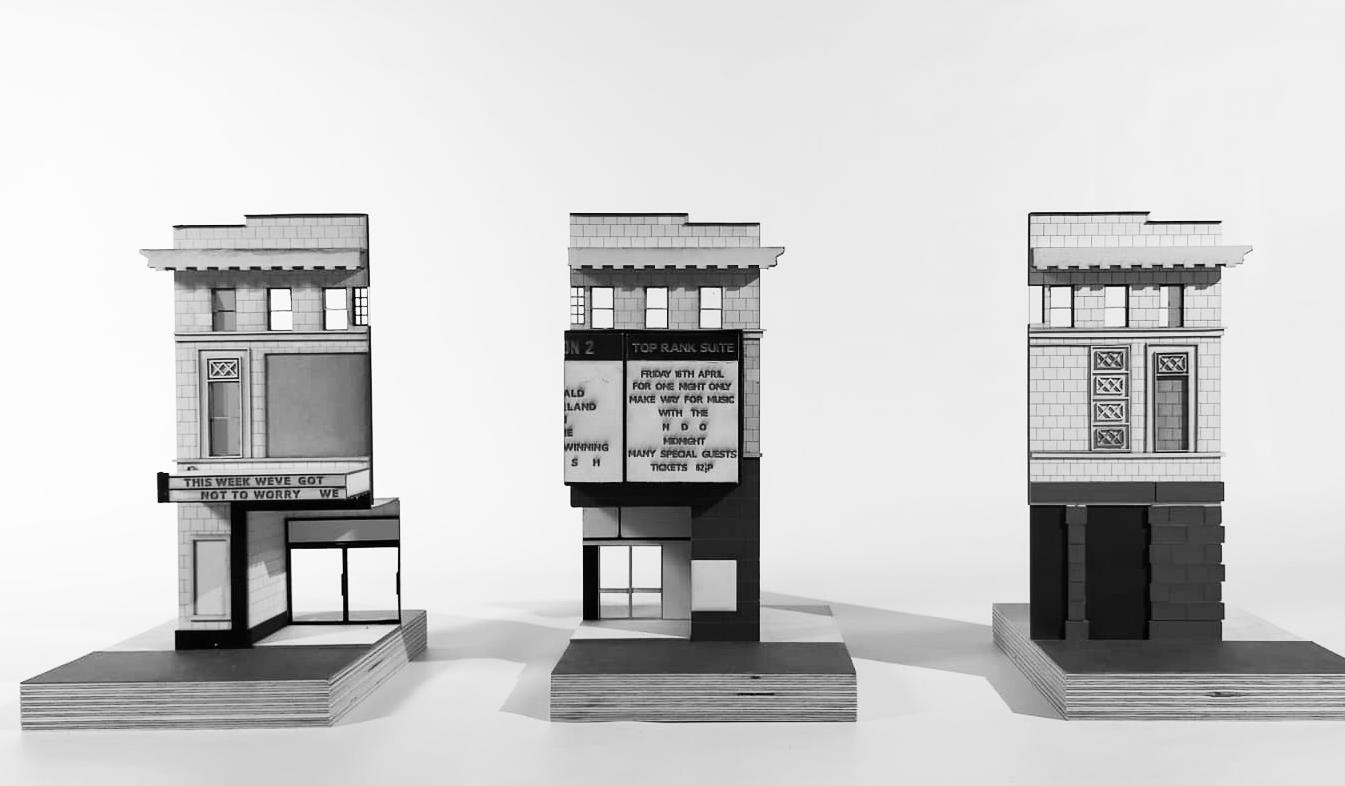
2019
CAMBRIDGE INTERNATIONAL A-LEVEL A*AA including Mathematics, Further Mathematics and Physics
2018
IELTS Overall Band Score: 8.0
JAPANESE LANGUAGE PROFICIENCY TEST (JLPT) N3 Level
2016
SIJIL PEPERIKSAAN MALAYSIA (SPM) equivalent to GCSE O-Level (11A*/A) including Malay, Chinese, English, Japanese as Foreign Language, Additional Mathematics, Mathematics, Biology, Chemistry, Physics, History, Moral
ENGLISH
MANDARIN
MALAY
JAPANESE
AUTOCAD
SKETCHUP
RHINO
PHOTOSHOP INDESIGN
ILLUSTRATOR
LIGHTROOM